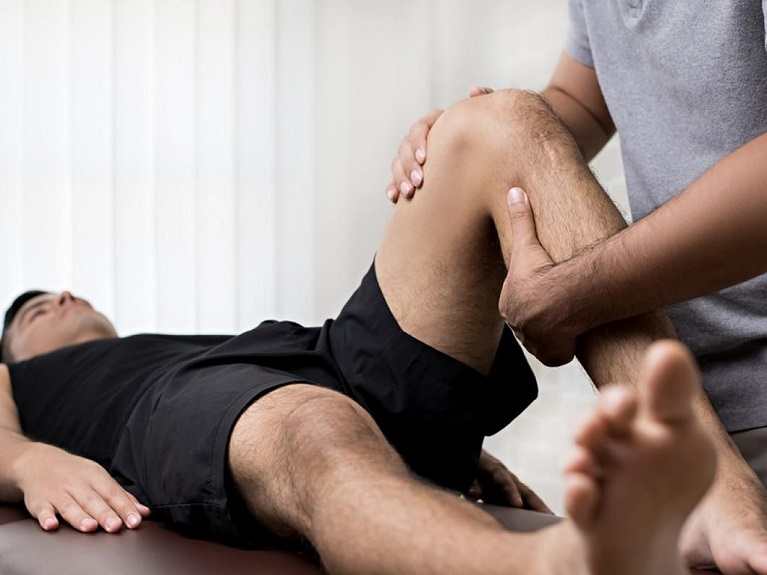How It Works: Spinal Decompression and Its Role in Pain Relief
All Concerning Spinal Decompression: Reliable Solutions for Spinal Health and Wellness
Spinal decompression therapy has become a feasible choice for those looking for remedy for various spinal problems. This non-invasive therapy targets the origin of discomfort, such as herniated discs and chronic back discomfort. Understanding its principles and applications can shed light on just how it advertises overall spinal health. What are the certain benefits and methods associated with spinal decompression? Exploring these questions might expose beneficial understandings for people considering this strategy.
Comprehending Spinal Decompression Therapy
What exactly is spinal decompression treatment, and how does it work? Spinal decompression therapy is a non-invasive treatment targeted at soothing pressure on the spine's discs and nerves. It utilizes customized tools to carefully extend the spine, producing negative pressure within the discs. This adverse stress assists in the repositioning of herniated or protruding discs and encourages the influx of essential nutrients and liquids right into the affected areas.
People typically rest on a mechanized table that sustains the spine while allowing controlled grip. The treatment can target various spinal problems, including chronic back discomfort, disc, and sciatic nerve pain deterioration. Sessions are generally pain-free and can last from 30 to 45 minutes. While numerous people experience prompt relief, a collection of sessions might be advised for ideal outcomes. On the whole, spinal decompression therapy stands for an alternative strategy to spinal health and wellness, aiming to bring back function and promote total health.
The Science Behind Spinal Decompression
Spinal decompression treatment is grounded in principles of biomechanics and physiological feedback to stress adjustments within the spinal column. This non-invasive therapy aims to alleviate spinal disc stress, which can add to discomfort and discomfort. By employing grip methods, spinal decompression develops an adverse pressure setting within the intervertebral discs. This unfavorable pressure assists in the repositioning of herniated or protruding discs and advertises the influx of crucial nutrients and liquids, assisting in the recovery procedure.
Research study shows that spinal decompression can cause a boost in disc height, which may relieve nerve root compression. Back Decompression Therapy. The therapy likewise aims to improve spinal alignment, possibly enhancing overall biomechanical feature. Understanding these scientific principles helps professionals apply spinal decompression successfully, making certain that individuals obtain targeted treatment tailored to their specific spinal problems. Overall, the scientific research behind spinal decompression highlights its relevance in the area of spinal health
Advantages of Spinal Decompression
While many people seek relief from chronic pain in the back, the advantages of spinal decompression expand past plain discomfort management. This restorative technique help in boosting spinal health and wellness by promoting appropriate positioning and decreasing pressure on intervertebral discs. Improved circulation is an additional notable benefit, as spinal decompression promotes better blood circulation to the spine, beneficial surrounding tissues and speeding up healing procedures.
In addition, spinal decompression can result in increased flexibility and enhanced series of motion, allowing people to participate in everyday activities with greater simplicity. Lots of clients record enhanced overall wellness and a decrease in anxiety levels, as alleviating neck and back pain can significantly enhance lifestyle.
Spinal decompression may offer as a preventive action, aiding to avert future spinal issues by maintaining excellent spinal function. On the whole, the multifaceted benefits of spinal decompression emphasize its relevance in advertising lasting spinal health and wellness and health.
Kinds Of Spinal Decompression Methods
Various methods exist for spinal decompression, each made to ease stress on the spine and boost overall wellness. One common method is mechanical spinal decompression, which uses a grip table to gently extend the spine, producing adverse pressure in the discs. An additional technique is manual spinal decompression, carried out by a chiropractic physician, that uses regulated pressure to soothe and straighten the spine tension.
In addition, there are non-invasive therapies such as inversion treatment, where people hang upside down to advertise spinal elongation. In addition, workouts that concentrate on reinforcing core muscular tissues can contribute to spinal assistance and decompression.
Some experts utilize advanced modalities like spinal decompression gadgets, which are crafted to offer targeted alleviation. Each method intends to enhance spinal alignment, lower discomfort, and boost movement, accommodating the unique needs of people seeking remedy for spinal discomfort.
What to Anticipate During a Spinal Decompression Session
During a spinal decompression session, individuals can anticipate a collection of prep work actions designed to assure their comfort and safety. The session itself normally entails a mix of therapeutic techniques focused on relieving stress on the spine. Understanding these components can assist individuals feel a lot more at simplicity prior to and throughout the therapy.
Treatment Preparation Steps
As patients prepare for a spine decompression session, they can anticipate a meticulously structured procedure developed to ensure their comfort and security. At first, experts will certainly carry out a detailed analysis, evaluating clinical history and current signs and symptoms to customize the treatment. Individuals may be encouraged to use comfortable apparel and eliminate any kind of precious jewelry that might interfere with the treatment. It's additionally usual for clinicians to clarify the innovation and techniques made use of in spinal decompression, ensuring people understand the procedure and its benefits. Furthermore, people might be advised to hydrate effectively before the session. This preparation aims to produce a desirable environment for spinal health and wellness, permitting individuals to really feel secure and informed regarding their treatment journey.
Session Experience Overview
A spine decompression session typically unravels in a regulated and tranquil setting, where individuals are located pleasantly on a specialized table developed for the treatment. The professional begins by explaining the procedure, making sure the person recognizes each action. As soon as worked out, mild grip is related to the spine, creating area between the vertebrae to alleviate stress on the nerves and discs. Individuals may really feel a light stretching feeling, but discomfort should be marginal. Procedure usually last about 30 to 45 minutes, during which the expert checks the person's reaction. Later, patients may receive suggestions for follow-up care or workouts to boost outcomes. In general, the experience aims to promote leisure and healing, cultivating a feeling of health.
That Can Take Advantage Of Spinal Decompression?
That stands to gain the most from spinal decompression therapy? Individuals dealing with persistent back discomfort, herniated discs, or degenerative disc condition are main prospects for this therapy. Those experiencing sciatic nerve pain or pins and needles in the limbs may also benefit greatly, as spinal decompression can aid reduce stress on the spinal nerves. In addition, athletes recovering from injuries or people with postural concerns often find alleviation through this treatment.
Furthermore, individuals seeking a non-invasive choice to surgery for their spinal wellness issues might take into consideration spinal decompression as a practical option. It is important for possible prospects to talk to health care professionals to establish the appropriateness of this therapy for their particular problems. Overall, spinal decompression therapy can supply considerable advantages for a diverse variety of individuals, boosting their overall top quality of life and advertising much better spinal health.
Tips for Maintaining Spinal Health After Treatment
After undergoing spinal decompression treatment, keeping spinal health and wellness is important for long-lasting well-being. Carrying out regular exercise routines, being conscious of position, and developing an ergonomic workspace can substantially add to a much healthier spine. These techniques not only support recuperation however also assist avoid future problems.

Normal Exercise Routines
Preserving spinal wellness complying with treatment is necessary for long-lasting recovery and total well-being. Routine exercise routines play a crucial function in this process. Engaging in low-impact tasks such as swimming, walking, and cycling can help strengthen the muscle mass supporting the spine, boost versatility, and enhance overall wheelchair. Including core-strengthening workouts is specifically valuable, as they provide stability and support to the spinal column. Additionally, gentle extending regimens can reduce tension and promote relaxation in the back muscles. It is crucial to seek advice from a medical care professional prior to starting any type of brand-new workout regimen to ensure it lines up with individual healing objectives. Uniformity in these activities promotes a positive technique to spinal health and wellness, aiding in the avoidance of future issues.
Pose Understanding Strategies
A strong awareness of stance can significantly affect spinal wellness during the recuperation procedure. People need to purposely preserve an upright setting, making certain that the head is straightened with the spine and shoulders are kicked back. On a regular basis signing in with one's posture throughout the day can assist strengthen great habits. When sitting, making use of an encouraging chair that promotes back assistance is necessary. Furthermore, standing for long term durations needs weight distribution between both feet and engaging the core muscular tissues. Exercising mild stretches and movement workouts can likewise improve awareness of position. Mindfulness methods, such as deep breathing, can assist in acknowledging stress and advertising leisure in the back. Applying these methods fosters an aggressive method to spinal wellness post-treatment.
Ergonomic Work Space Setup
While an ergonomic work space might feel like a luxury, it is critical for those recuperating from spinal concerns. A well-structured atmosphere can significantly assist in preserving spinal health. Secret aspects consist of a chair with lumbar assistance, which encourages appropriate pose, and a workdesk height that enables arm joints to rest at a 90-degree angle. In addition, computer system screens must go to eye level to minimize neck strain. Normal breaks to extend and stand are crucial, as prolonged sitting can worsen pain. Footrests can likewise improve blood circulation and decrease pressure on the lower back. By focusing on these ergonomic concepts, individuals can create an encouraging workspace that cultivates healing and promotes long-lasting spinal health, ultimately improving total productivity and comfort.
Frequently Asked Questions
The Length Of Time Does Spinal Decompression Therapy Generally Take to Show Outcomes?
Spinal decompression treatment normally takes a number of weeks to reveal recognizable outcomes. The majority of people experience enhancement within 4 to 6 weeks, depending upon specific conditions and adherence to the suggested treatment plan outlined by health care specialists.
Exist Any Kind Of Side Results Associated With Spinal Decompression Therapy?
Spinal decompression treatment may cause light adverse effects, such as momentary pain, muscle convulsions, or pain after therapy. However, these symptoms are generally brief and deal with quickly, allowing clients to proceed their treatment effectively.
Can Spinal Decompression Therapy Be Done in your home?

Is Spinal Decompression Safe for Expectant Ladies?
Spinal decompression is usually taken into consideration harmful for expecting ladies as a result of possible threats. It is essential for expectant mommies to seek advice from healthcare specialists prior to going through any spinal therapies to ensure the security of both mommy and baby.
How Often Should I Go Through Spinal Decompression Treatment for Finest Results?
Generally, people should undertake spinal decompression treatment 2 to 3 times a week for best outcomes. The regularity may vary based on specific problems and need to be established by a medical care specialist.
Spinal decompression therapy is based in concepts of biomechanics and physiological feedback to stress modifications within the spinal column. Comprehending these clinical concepts aids specialists use spinal decompression efficiently, making certain that clients obtain targeted treatment tailored to their certain spinal problems. Spinal decompression might serve as a preventative measure, aiding to prevent future spinal problems by maintaining excellent spinal function. Individuals looking for a non-invasive option to surgical procedure for their spinal health and wellness issues might consider spinal decompression as a sensible alternative. After undertaking spinal decompression therapy, keeping Chiropractor spinal health and wellness is vital for long-term well-being.